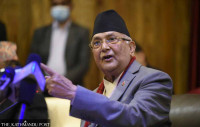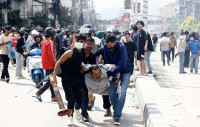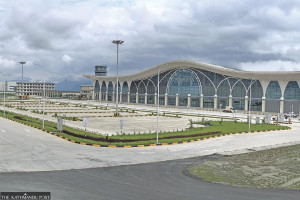Opinion
Don’t forget the children
The election manifestos of various political parties were filled with this or that vision for the development of the country.
Pc Wasti
The election manifestos of various political parties were filled with this or that vision for the development of the country. All have promised to transform Nepal into a prosperous country. However, they were either silent on the subject of children’s development or discussed it only briefly. The Nepal Demographic and Healthy Survey reveals that chronic malnutrition has dropped sharply from 57 percent in 1996 to 36 percent in 2016, but the figure is still high according to the World Health Organisation (WHO).
Controlling problems
The major causes of malnutrition are low birth weight, mothers’ nutritional status, mothers’ education, economic status of the family and household food security. The report has shown that the risk of being malnourished is twice as high for children of illiterate mothers compared to children who have mothers with an SLC plus education. Likewise, children from the poorest households are three times as likely to be malnourished than children from the wealthiest households. Children from households with food insecurity have a 17 percent higher risk of being malnourished than children from food secure households.
Sometimes, percentages don’t show the magnitude or the urgency of the problem. When we translate percentages into numbers, the gravity of the problem sinks in. We know that 36 percent of children below five years are malnourished. So how many children is that? This means that out of Nepal’s total population of 29 million, slightly less than 1 million children don’t get enough to eat.
Malnourished children might die of any illness at any time in the future. If they survive, they will frequently become ill and take away the family’s time and money. Malnourished children might start school late due to compromised mental and cognitive development and may not perform well in their studies. With 1 million malnourished children among us, how can we dream of a prosperous country? How can we dream of graduating from Least Developed Country (LDC) status, and how can we dream of creating a self-sustaining and economically able nation?
Malnutrition is like a forest fire which spreads and goes out of control if not managed in time. We should have brought it under control when it was a tiny spark. Now, it has already become a forest fire and huge resources are required to control it.
The parties have dispensed big dreams through their election manifestos.
They have talked about magnificent facilities, roads, provincial capitals, and the power and responsibility of different levels of government. Most of them have nothing to do with everyday problems of the people. However, among all the talk about the great things to come, brief mentions have been made about the problem of food and nutrition, malnutrition and children’s welfare.
Living up to promises
It is heartening to note that the parties have reached a consensus on making sustainable food security a common agenda. The parties put the agenda of eliminating hunger and malnutrition in their manifestos. Some parties talked about ensuring food and nutrition security by making the country self-sufficient in cereals, milk, meat, fish and eggs. These election pledges will remain on paper as it is very difficult to realise these goals. It’s very important to transform the present situation of our country first.
We need good roads, agriculture and agri-business, industries, and economic prosperity in the country with employment and social security plans such as health, education and other welfare schemes. But how will it be possible to develop our nation when there are so many malnourished children around? We need smart engineers, technologists and workers for industry. We need able doctors for hospitals, we need able and service oriented civil servants at the federal, provincial and local levels; and we need visionary leaders to drive the nation at various levels. If we do not have a plan to reduce hunger and malnutrition among the children, all these dreams will disappear.
The purpose of development is not just to transform the face of the country but to transform the face of its people. The face of the women and children shows both the present and the future of the country. If we fail to change the face of our children, if we fail to transform the face of the women, we will fail in the real sense. Now that the election is over, the elected leaders should work to fulfil their campaign promises and move the agenda of well-nourished children forward for a prosperous and wealthy Nepal.
Wasti is a senior food research officer at the Department of Food Technology and Quality Control




 7.12°C Kathmandu
7.12°C Kathmandu










